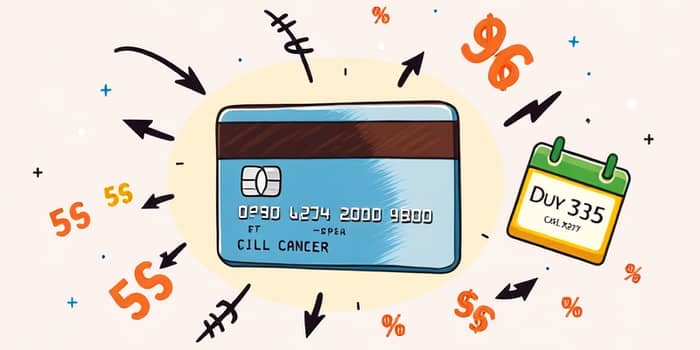
Credit cards offer convenience and rewards, but understanding the fine print can save you hundreds in interest. This comprehensive guide will demystify how interest is calculated and how grace periods work, empowering you to take control of your finances.
Credit card interest is the additional amount you pay when you carry a balance. In essence, it represents the cost of borrowing using your credit card beyond the original purchase price.
Interest rates are expressed as an APR (Annual Percentage Rate). Typical APRs range from 12% to 25%, with an average between 17% and 20.66%. Understanding APR variations helps you compare offers and avoid unwanted charges.
Issuers use different methods to determine interest charges. Knowing each method helps you predict potential costs and plan payments strategically.
The most common approach is the average daily balance method, which spreads your balance across each day of the billing cycle.
Here is a step-by-step breakdown:
Some issuers apply compounded interest daily throughout year, adding each day’s interest back into the balance. Over time, this causes you to pay slightly more than the stated APR.
Seeing real numbers in action makes the process clearer. Consider these scenarios within a 30-day cycle:
For a $2,000 average daily balance at 16% APR: daily rate 0.16/365 = 0.00044. Over 30 days, interest = $2,000 × 0.00044 × 30 ≈ $26.74.
Credit cards often assign different rates to various transactions. Recognizing each category prevents surprises on your statement.
The grace period is the time between the statement closing date and the payment due date. Legally, issuers must offer at least 21 days.
If you pay your statement balance in full within this window, you benefit from an interest-free period on new purchases. No interest accrues during that interval.
By paying the statement balance in full each month, you enjoy no interest charged on new purchases. This strategy effectively makes your credit card a short-term, interest-free loan.
Failing to clear the balance means interest starts accruing immediately on unpaid amounts. Future purchases may lose their grace period until you return the balance to zero.
Multiple variables influence how much interest you ultimately pay:
Different transaction types carry separate rates, and promo APRs may apply only for limited periods. Payment posting dates can shift your average daily balance, and promotional offers can expire unexpectedly.
The more frequently you carry a balance or switch between transaction types, the more complex your interest calculations become. Staying organized is key.
By mastering these concepts, you can minimize charges and maximize benefits. Follow these practical guidelines:
Always aim to pay your statement balance in full. Track due dates using reminders or auto-pay. Avoid cash advances when possible, as they often carry high APRs and no grace period. Review each statement for accuracy and monitor promotional rate expirations.
Understanding your cardholder agreement and annual report lets you anticipate changes and negotiate better terms. A small effort each month yields substantial savings over time.
Knowledge is power when it comes to credit card interest and grace periods. By calculating interest accurately and leveraging your grace period, you keep more money in your pocket. Remember to make the statement balance in full each month, monitor rate changes, and always read your card agreement. Armed with these insights, you’re well positioned to use credit responsibly and benefit from its flexibility.
References













